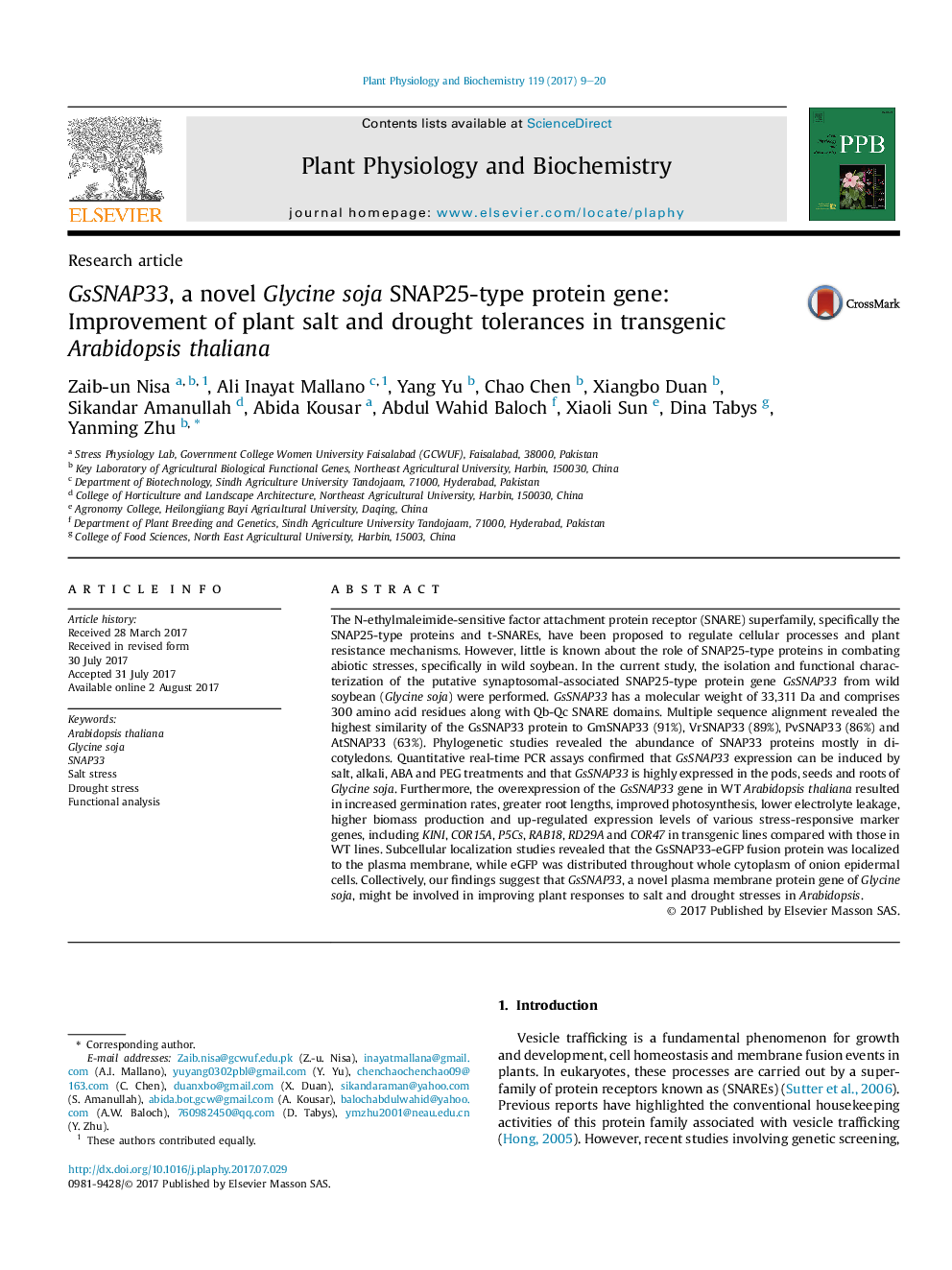| Article ID | Journal | Published Year | Pages | File Type |
|---|---|---|---|---|
| 5515286 | Plant Physiology and Biochemistry | 2017 | 12 Pages |
â¢GsSNAP33 is a plasma membrane protein.â¢The expression level of GsSNAP33 gene is induced under salt, alkali, ABA and osmotic stress condition.â¢Overexpression of GsSNAP33 up-regulated expression levels of KINI, COR15A, P5Cs, RAB18, RD29A and COR47 marker genes.â¢Overexpression of GsSNAP33 resulted in improved salt & drought tolerance.
The N-ethylmaleimide-sensitive factor attachment protein receptor (SNARE) superfamily, specifically the SNAP25-type proteins and t-SNAREs, have been proposed to regulate cellular processes and plant resistance mechanisms. However, little is known about the role of SNAP25-type proteins in combating abiotic stresses, specifically in wild soybean. In the current study, the isolation and functional characterization of the putative synaptosomal-associated SNAP25-type protein gene GsSNAP33 from wild soybean (Glycine soja) were performed. GsSNAP33 has a molecular weight of 33,311Â Da and comprises 300 amino acid residues along with Qb-Qc SNARE domains. Multiple sequence alignment revealed the highest similarity of the GsSNAP33 protein to GmSNAP33 (91%), VrSNAP33 (89%), PvSNAP33 (86%) and AtSNAP33 (63%). Phylogenetic studies revealed the abundance of SNAP33 proteins mostly in dicotyledons. Quantitative real-time PCR assays confirmed that GsSNAP33 expression can be induced by salt, alkali, ABA and PEG treatments and that GsSNAP33 is highly expressed in the pods, seeds and roots of Glycine soja. Furthermore, the overexpression of the GsSNAP33 gene in WT Arabidopsis thaliana resulted in increased germination rates, greater root lengths, improved photosynthesis, lower electrolyte leakage, higher biomass production and up-regulated expression levels of various stress-responsive marker genes, including KINI, COR15A, P5Cs, RAB18, RD29A and COR47 in transgenic lines compared with those in WT lines. Subcellular localization studies revealed that the GsSNAP33-eGFP fusion protein was localized to the plasma membrane, while eGFP was distributed throughout whole cytoplasm of onion epidermal cells. Collectively, our findings suggest that GsSNAP33, a novel plasma membrane protein gene of Glycine soja, might be involved in improving plant responses to salt and drought stresses in Arabidopsis.
